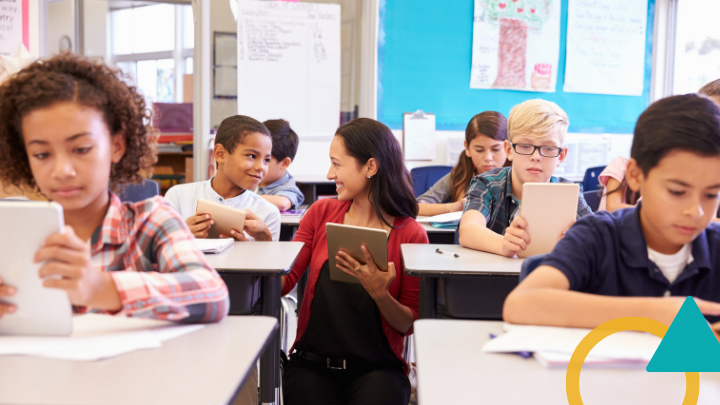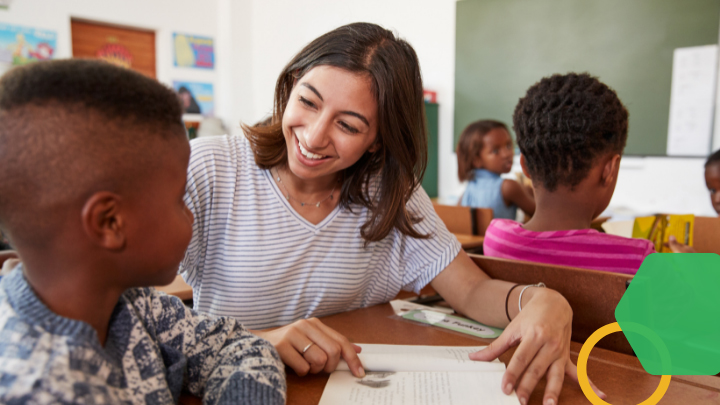This blog is the fourth in a series that highlights the work of the “Meeting the Needs of All Learners” Master Teacher Project. Each author is an experienced educator from the Kansas City area with deep expertise in differentiation and working with students with disabilities and English Learners. Learn more about the project.
One of the greatest challenges in classroom teaching is the prevalence of so many different needs and backgrounds in one classroom. Meeting the needs of all learners, especially in writing, can be a huge challenge — but ultimately can also result in the greatest of rewards.
I’ve found that motivating reluctant writers boils down to relationships and creativity. It’s through my relationships with students and my understanding of their backgrounds and interests that I’m able to tap into their creativity and motivate them to write.
This became eminently clear to me when I managed to tap into one reluctant writer’s creativity quite by accident. This particular student was an English learner who did well in all of his classes but hated writing and did the bare minimum required. However, when I tasked the students with writing their own versions of a song we had studied, his interest and motivation were finally piqued. When recording their writing, most students simply read their songs as poetry, but this student chose to record himself singing his song. I had inadvertently discovered the key to unlocking this student’s creativity. It was through music – which made sense given this student was enrolled in both choir and orchestra classes.
Like that middle schooler, all of our students have a well of creativity at their core – including, and often especially, those with the greatest gaps in education, language, and/or ability. They simply may not know how to access it and translate it into the written word. The teacher’s job is to somehow tap into that creativity. These are the steps I use in that process:
1. Build relationships with students.
Get to know your students’ interests and backgrounds and what they’re excited about. This is particularly helpful for those students who are learning English and/or have disabilities, as we often need as many tools in our toolbox as possible to reach them.
Some strategies to help with this process include:
- Bilingual and Multilingual Family Events as a means to gain insight into your English Learners’ backgrounds.
- Getting to Know Your Students All Year to Personalize Instruction a strategy written by Romain Bertrand, a BetterLesson Instructional Coach.
- Take Off, Touch Down Get to Know You a strategy written by Sara Rast, a Culturally Responsive Teaching & Learning Master Teacher.
2. Build students’ confidence in their writing abilities.
A vital component to students overcoming their reluctance to write is their perception of their own abilities and their confidence in themselves. This is particularly true of our English Learners and our students with disabilities. We will often hear from these students the statement that they can’t write — not that they don’t want to, but that they can’t. It’s our job as educators to seek different ways to build their confidence and their willingness to try. Creating an environment where trying is more important than “getting it right” is critical to this process.
Some strategies to help in building students’ confidence include:
- Charting Positive Strengths to Build Relationships by Katie Bruns, a Meeting the Needs of All Learners Master Teacher.
- Classroom Mottos by Alexandria Raine, a Meeting the Needs of All Learners Master Teacher.
- Identifying Character Traits for Affirmations by Chloe Knowling, a Meeting the Needs of All Learners Master Teacher.
- Promoting Positive Self-Talk by Chloe Knowling, a Meeting the Needs of All Learners Master Teacher.
3. Make writing fun!
The information gathered in step one (and that is continually updated throughout the school year) is absolutely critical here. Use knowledge of the students and their interests to provide creative writing opportunities that are exciting for them.
For example:
- Provide mentor texts based on student interests. These texts might be the lyrics of a song, the story behind a video game, a recipe or cooking article, a blog post about cats, a how-to article on changing a car’s oil, etc. After studying the mentor text with the students, guide them through the process of writing their own version of that text. In my classroom, I’ve used The Arrival by Shaun Tan, which is a picture-rich, wordless text that immigrant students can relate to and all students can emulate. For more ideas, see Using Mentor Texts and Frames to Teach Writing.
- Provide non-traditional storytelling options. Offer students the opportunity to express themselves in ways that aren’t always tied to the written word. Discuss the nature of stories and of individual voices and how one’s voice can be shared in unique ways. Explore these alternate storytelling options with students (i.e., through a podcast, a digital presentation, a short video, a speech, musically, artistically, or dramatically). These alternate methods can be especially critical in the process of helping language learners and students with disabilities find their voices. See Using Movement and Drama to Teach Language and Using Rhythm and Music to Teach Language and Content for more ideas on this.
- Encourage student creativity through shared writing projects. Solicit student ideas and work collaboratively in small groups or as an entire class to create a piece of text. The pressure is less when it’s a collaborative effort and students have more opportunity to fully express their ideas when they’re not also tasked with writing them down. Having someone script out their ideas can really help in the brainstorming process and can serve as a road map for the story to follow. This is especially helpful for students who already struggle to express themselves, whether because of a disability or because they are still learning the language. See Using Mentor Texts and Frames to Teach Writing for more information and examples of shared writing activities.
The most important thing to remember in trying to motivate students to write is that every student is different. What works for one student may not work for the next. The key is to keep trying, to keep exploring new texts with students, to keep seeking alternate ways for students to tell the stories they have inside. It’s a process and that process may not start with the written word. The journey may begin with illustrations and images and no words at all. Ultimately, the goal is for students to tell their stories in whatever way they are able, and of course, the hope is that their capacity for story-telling will grow over time.
Find more strategies within our Student-Centered Literacy focus area.
Learn More






